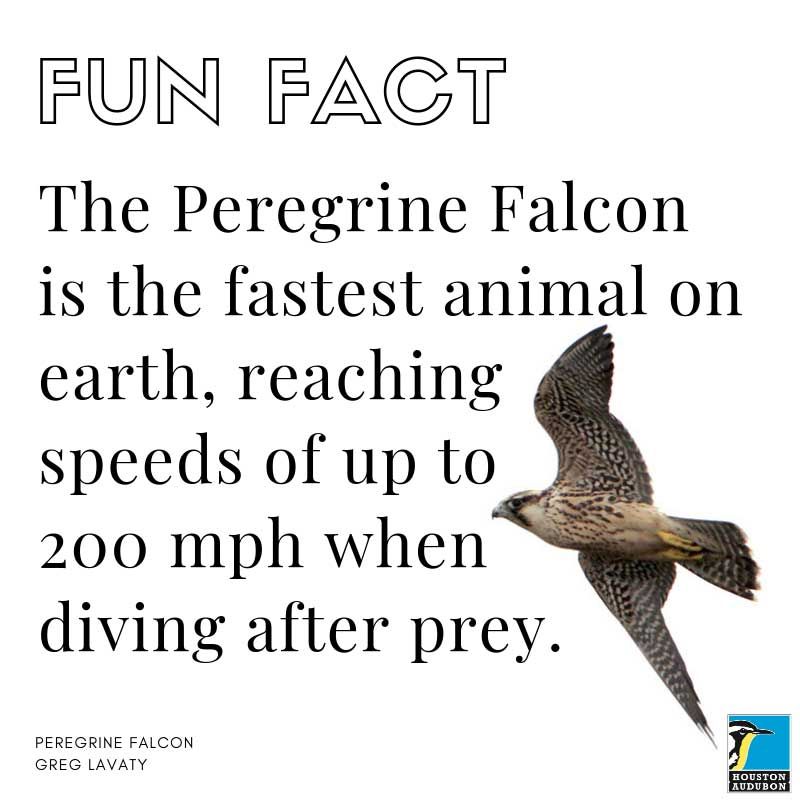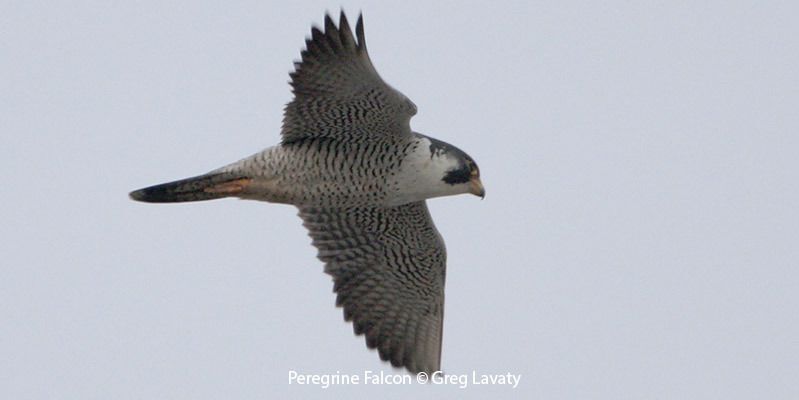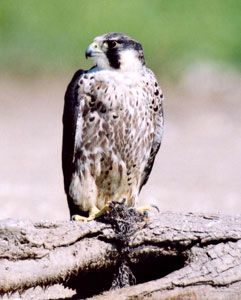
© Robert McFarlane. Photographed at Bolivar Flats Shorebird Sanctuary.
Peregrine Falcon
Falco peregrinus
Family: (Falconidae) Falcons and Caracaras
Preferred Habitat: Many habitats including cliffs and urban skyscrapers. Coastal particularly during migration
Seasonal Occurrence: Uncommon fall through spring.
Profile by Richard Gibbons: The Peregrine Falcon is a large raptor with bluish-gray body feathers and a dark face that varies from a single stripe to a full hood. Falcons are distinguished from other raptors by their sharp pointed wings and faster and more frequent wing beats in flight. Since almost being eradicated from eastern North America from pesticide poisoning in the mid-20th century, Peregrine Falcons have become once again numerous across the U.S. thanks to focused recovery efforts.
Peregrine Falcons mostly hunt by diving for small birds found in large open areas, namely beaches. There are almost 2,000 species of birds world-wide that have been documented as prey for Peregrine Falcons. These birds are built for speed, Peregrine Falcons will fly to heights of up to 3000 ft then close their wings and dive down toward their prey at startling speeds, this behavior is called “stooping”. Peregrine stoops have been clocked in at a max speed of 242 mph, making them the fastest animal on planet Earth!
Typically, Peregrine Falcons nest on tall rocky cliffs. Males make several small scrapes along the cliff face and the female chooses one of the scrapes to be the nest, no nest lining or further nest building occurs before the eggs are laid. The incubation period is 29-32 days and nests have 2-5 eggs.
Peregrines are also well known for nesting on structures such as bridges, buildings, or cell towers. There is even a small population of Peregrine Falcons that lives and breeds year-round on the buildings of New York City.
Peregrine Falcons are one of the most widespread birds on the planet, occurring on every continent except Antarctica. They breed in the Western U.S. and spend their winters all along the Gulf and Atlantic coasts. Come to our Bolivar Flats Sanctuary and look for these magnificent predators! If you see hundreds of shorebirds flush all at once, look around for a Peregrine Falcon hunting in the area.
Profile by Nick Minnich: This week’s Beak of the Week is equipped with a unique adaptation that makes it the ultimate aerial hunter. Peregrine Falcons, regarded as the fastest flying bird, also have the widest natural distribution of any bird on Earth, nesting on every continent except Antarctica. Often clocking in at 200 mph, this falcon is one of the most spectacular birds of prey. The bird’s long and pointed wings, bluish-gray wash, black-barred underbelly, and black helmeted appearance make it absolutely unmistakable.
Peregrine Falcons are primarily avivores, typically favoring pigeons around cities while often taking ducks and shorebirds along the coast. This bird hunts by flying at high levels, and then stooping in a high-speed dive to strike larger prey midair. Additionally, prey can be taken by surprise at ground level. Peregrine Falcons possess a unique bill adaptation known as a tomial tooth, a mandibular projection which allows for more effective predation, moving much like a pair of scissors over the spinal cord of the prey.
Despite being a noble spectacle of the Falconidae, this bird faced widespread decline due to high concentration of pesticides during the mid to late 20th century. Nonetheless, the restriction of DDT coupled with recovery efforts by various conservation organizations have allowed the species to recover and eventually be delisted from the Endangered Species list in 1999.
While there are nearly twenty distinct subspecies of Peregrine Falcons in the world, the Anatum (American) and Tundra Peregrine are the dominant subspecies that occur in Texas. Tundra Peregrines are highly migratory, breeding on cliff ledges in the Arctic then traveling over much of North America to winter in South America. The Texas coastline plays an important role in the survival of these migrating birds, as the abundance of migrating shorebirds provides ample sustenance to fuel the journey.
The Bolivar Flats Shorebird Sanctuary is a great place to observe Peregrine Falcons foraging and exhibiting their unique hunting abilities. During a recent shorebird survey, the High Island team counted two individuals, including one banded on the Atlantic Coast. A great indicator that a Peregrine Falcon is in the vicinity is the sudden burst of shorebirds taking flight and flushing from their roost/forage locale.
-
Cornell Lab of Ornithology
-
Bird Guide
-
Bird Library
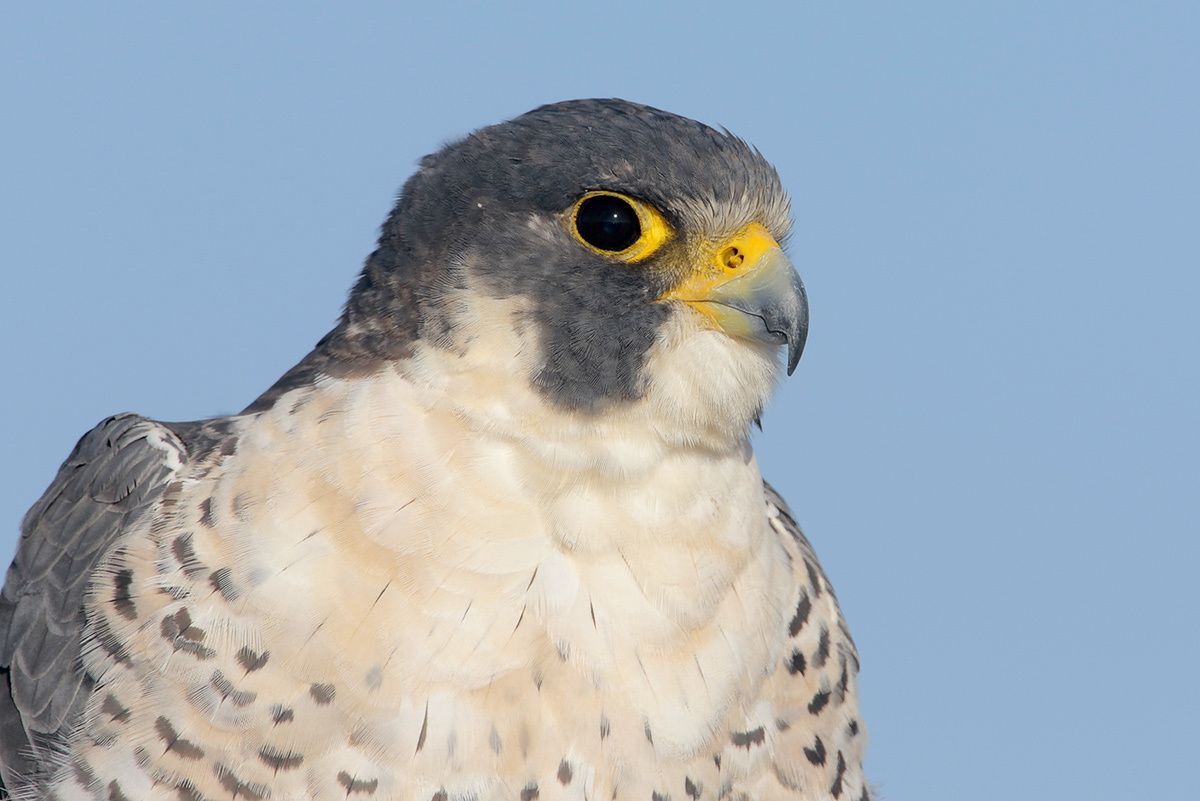
© Greg Lavaty, www.texastargetbirds.com
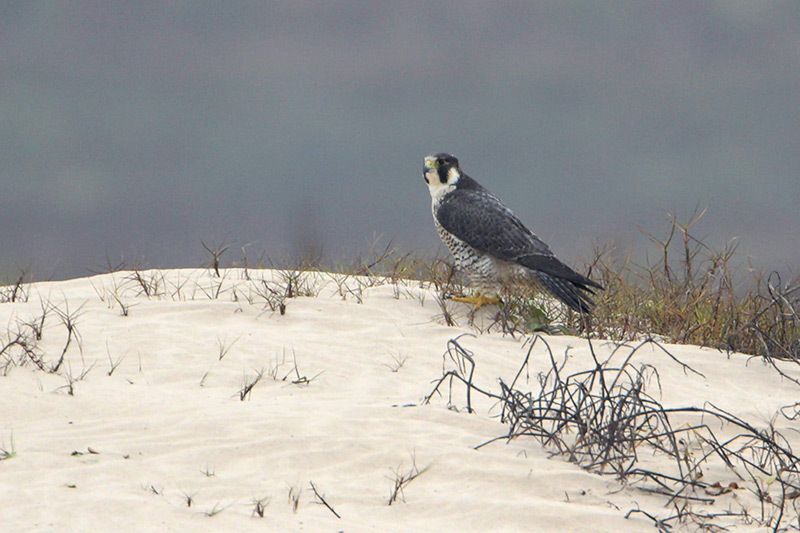
© Greg Lavaty, www.texastargetbirds.com
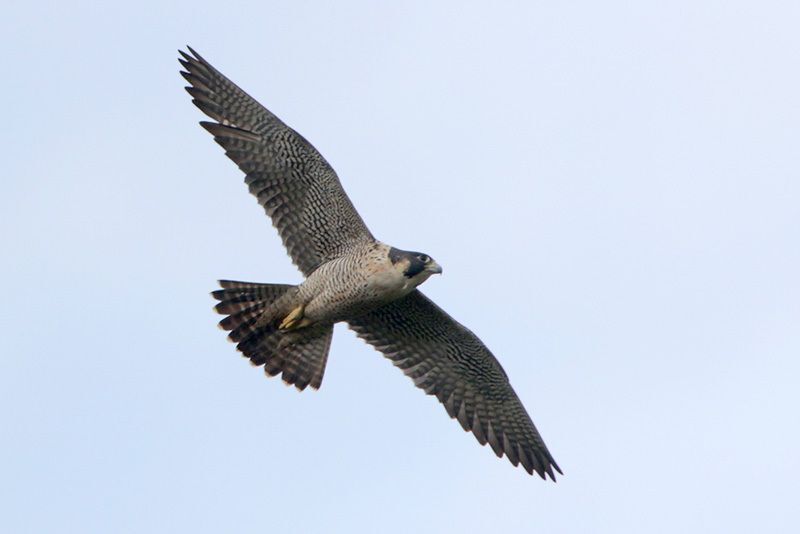
© Greg Lavaty, www.texastargetbirds.com
